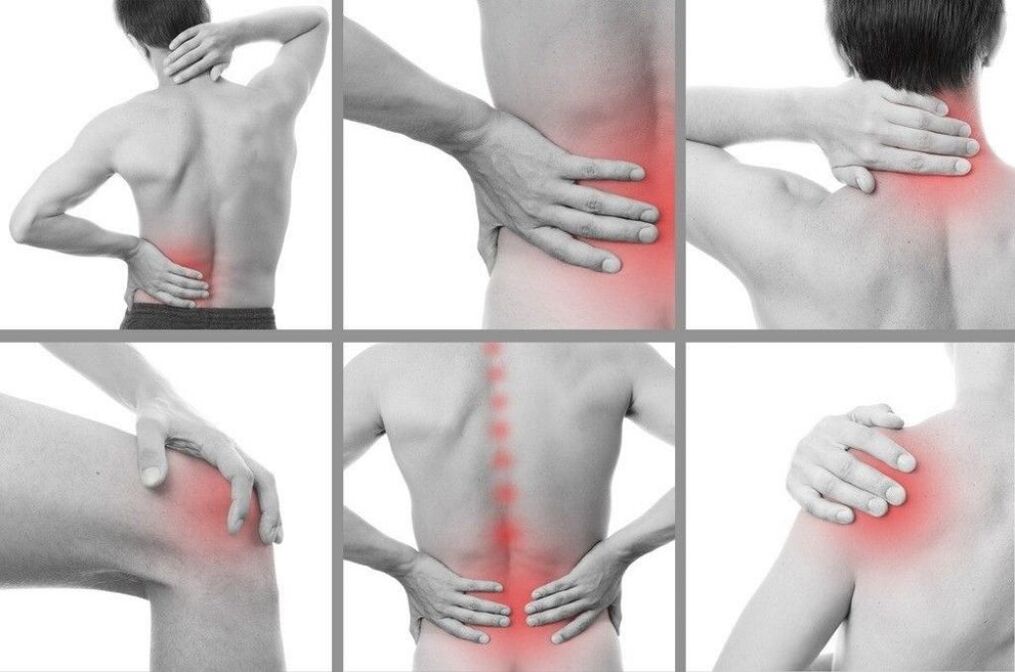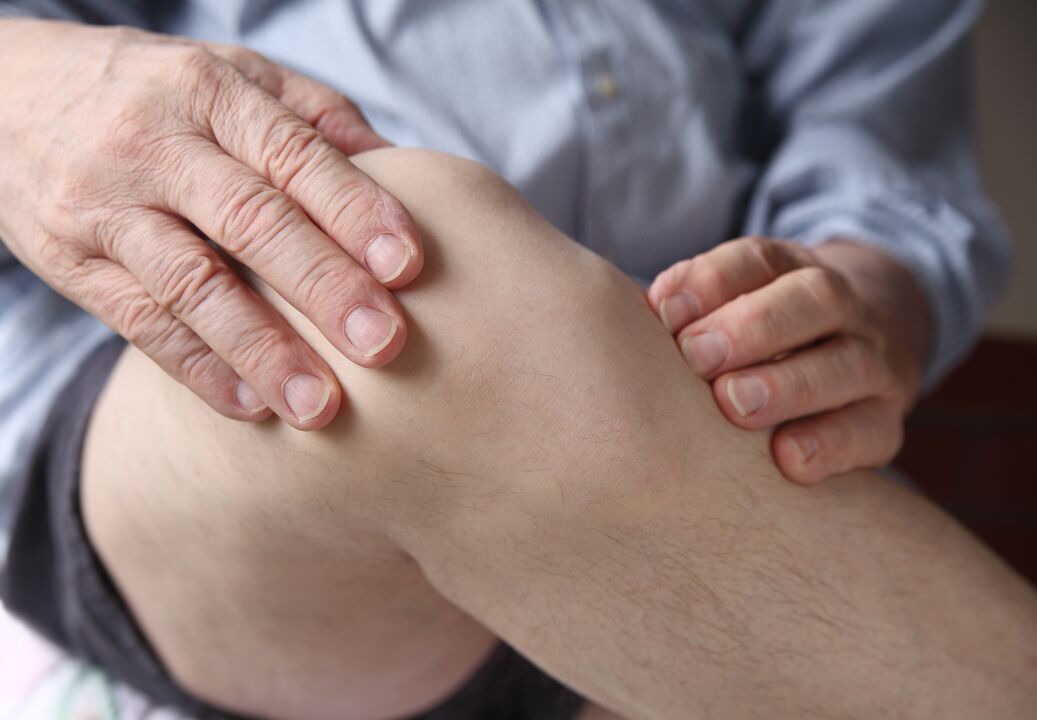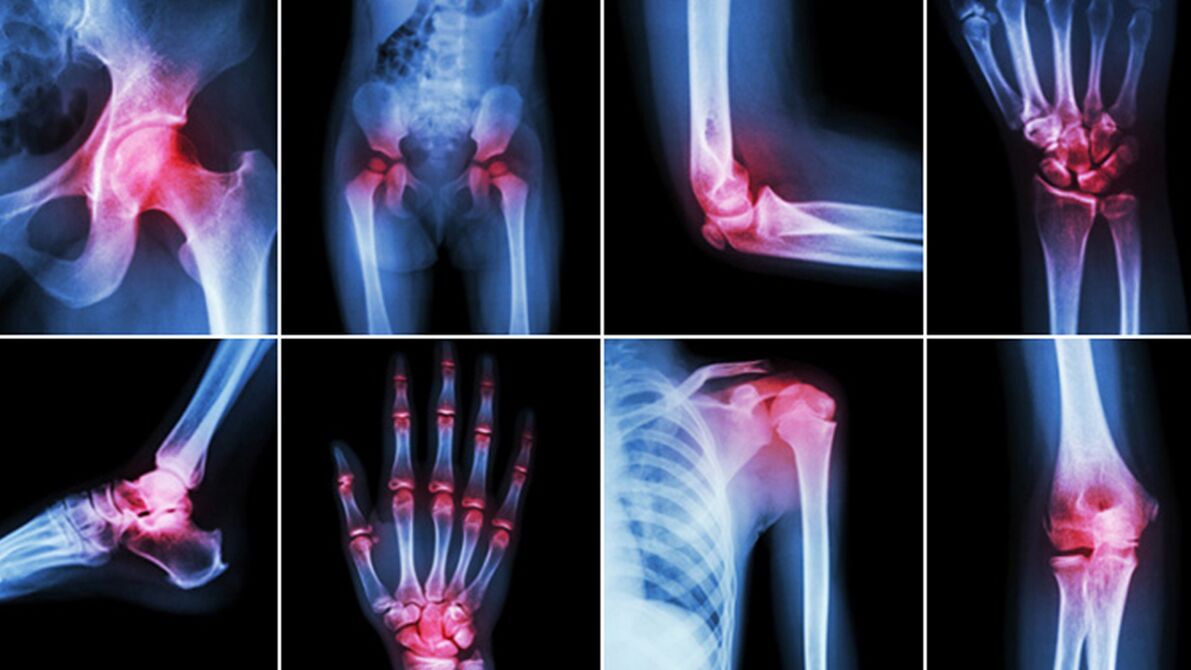Joint pain throughout the body is not a disease, but a symptom. At the same time, the painful sensation often spreads to the muscles, as a result, it is difficult to wake up from sleep. Many diseases lead to unpleasant consequences, pain treatment is not possible without knowing the exact cause. What symptoms should be focused on and what to do?
The main cause of pain
If more than one joint is sore, not several, but all at once, this is a sign of systemic damage to the body. In addition, it is difficult to understand where exactly the pain is localized - in joints, muscles, bones, or anywhere at once. Pain is felt all over the body, making it difficult to find. Because all joints can hurt:
- Excessive physical activity.
- Contagious disease.
- Pathological changes in connective tissue.
- Diseases of the circulatory system.
- Oncological diseases.
- Neuralgia.
As can be seen from the above, it is impossible to immediately understand the cause of pain. The exact reason can be known only after passing the appropriate examination. If the hard physical work of the previous day is excluded, we are talking about a disease that needs to be treated.

Why it is dangerous
First of all, severe pain throughout the body reduces movement, but this is not the main danger. The main threat is a disease that causes a painful sensation in the joints. Self -medication in such cases is very dangerous, because it will lead to the fact that only the symptoms will pass, while the disease itself will develop. You can try to get rid of the pain and swelling yourself, but after that you must see a doctor.
Symptoms of the disease
Any disease has its own characteristic symptoms. Since pain is the most obvious sign, the first thing to do is determine its characteristics:
- Type of pain (sore, sharp, cramping).
- Localization (joints, surrounding muscles, bones).
- Whether moving through the body, or a separate area is always sore.
- Pain or seizures persist intermittently.
- The intensity of the sensation.

In addition, patients may feel weak, severe fatigue or muscle aches. Further symptoms vary depending on the specific cause of the pain:
- Excess voltage. . . Excessive physical activity the day before can lead to the fact that the next day the whole body will be sick. This is due to the production of lactic acid, which accumulates in the muscles. In this case, a good warm -up is enough to relieve the pain.
- Infection. . . Joint pain is often accompanied by illnesses such as the flu, fever, meningitis, and even common acute respiratory infections in advanced forms. In addition to pain, the symptoms are accompanied by cough, skin rash, chills, weakness, nausea and digestive disorders, high body temperature.
- Hepatitis virus. . . With liver damage, in addition to the possibility of pain, there is yellowing of the skin and whites of the eyes, deterioration of appetite.
- Pathological changes in connective tissue. . . Arthritis, lupus erythematosus, polymyositis - all of these can trigger joint pain. In addition, some diseases of the heart, kidneys, lungs, vascular and nervous systems can also cause painful sensations in the joints.
- Blood diseases. . . In addition to the sensation of pain in the body, the patient experiences fever, pale skin, increased lymph nodes, liver and spleen. In this state, susceptibility to infectious diseases is increasing. In the acute form, such diseases are life threatening if not treated in a timely manner.
- Oncology. . . With oncological tissue damage, joint pain may appear earlier than self -diagnosed disease. In addition, symptoms such as weakness, weight loss, poor appetite, fever, mood swings, depression talk about oncology.
- Neuralgia. . . With diseases of the nervous system, in addition to pain in the joints and muscles, patients may experience numbness in the fingertips, loss of sensitivity, and weakness. In addition, hair begins to fall out and the skin becomes drier and thinner.
If joint pain is accompanied by the listed symptoms, this is a reason to see a specialist.
Diagnostic methods
Who to contact with complaints of pain throughout the body:
- Rheumatologist.
- Hematologist.
- Oncologist.
- Infection members.
Once the doctor examines the patient and hears the complaint, he or she should send the patient for examination. To identify the diagnosis, the following diagnostic methods are used:
- General urine analysis.
- General blood analysis.
- Blood biochemistry.
- LHC blood and smear analysis.
- Bone marrow puncture.
- CT and MRI.
- Neuromyography.
A thorough examination will give a complete picture of the patient's condition. Only then can we talk about a particular disease and prescribe treatment.

Treatment of joint pain
The method of treatment chosen by the doctor depends on the data obtained during the examination. The most common is drug therapy. Various types of medications can treat almost all causes of joint pain. The choice of drug group depends on the type of disease:
- Antibiotics
- Anti-inflammatory drugs.
- Pain reliever.
- Hormone agents.
- Immunosuppressants
- Cytostatics.
Many drugs from the groups listed have serious contraindications - some of the drugs should not be taken if there is a tumor. In addition, almost all drugs have their own contraindications and side effects. This is one of the reasons why it is impossible to choose a drug independently and take it without thinking. The exact dose and type of medication is only prescribed by a doctor. If after the administration process there are no results, the specialist can replace the drug with another.

Surgery is required in extreme cases when drug therapy is ineffective. Usually, the surgery is prescribed for tumor diseases and blood diseases. In the case of cancer, surgery may be complemented by radiation therapy, and in cases of serious blood diseases, a bone marrow transplant is required.
Prophylaxis
To prevent your joint pain, you need to follow six simple suggestions:
- Proper nutrition. . . First, a balanced menu will give the body all the nutrients it needs to function normally. Second, eating well will help maintain your weight. Obesity is known to be one of the causes of joint pain.
- Chondroitin and Glucosamine. . . These ingredients are important for joint health. They are found in meat, cartilage and fish.
- Drinking regimen. . . Fluids help establish metabolism, if there is not enough water in the body, the nutrition of organs, muscles and joints is insufficient. You need to drink about 2 liters of water per day.
- Physical activity. . . Even regular gymnastics in the morning will help normalize blood circulation, as a result, the joints will get enough nutrients.
- Be careful. . . Any joint injuries should be avoided.
- Vitamin complexes and supplements. . . Missing vitamins and minerals can be obtained from the preparation, the main thing is to choose them correctly.
These simple tips can help keep your joints healthy. In addition to adjusting the diet and daily routine, it is necessary to undergo regular preventive examinations by a doctor. This will help be aware of the disease in time and start treatment.

















































